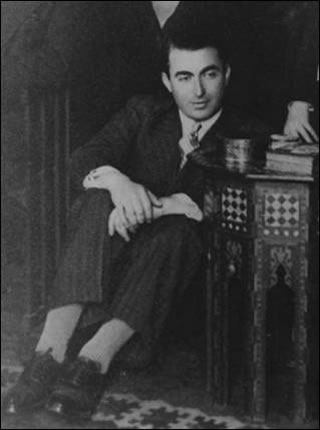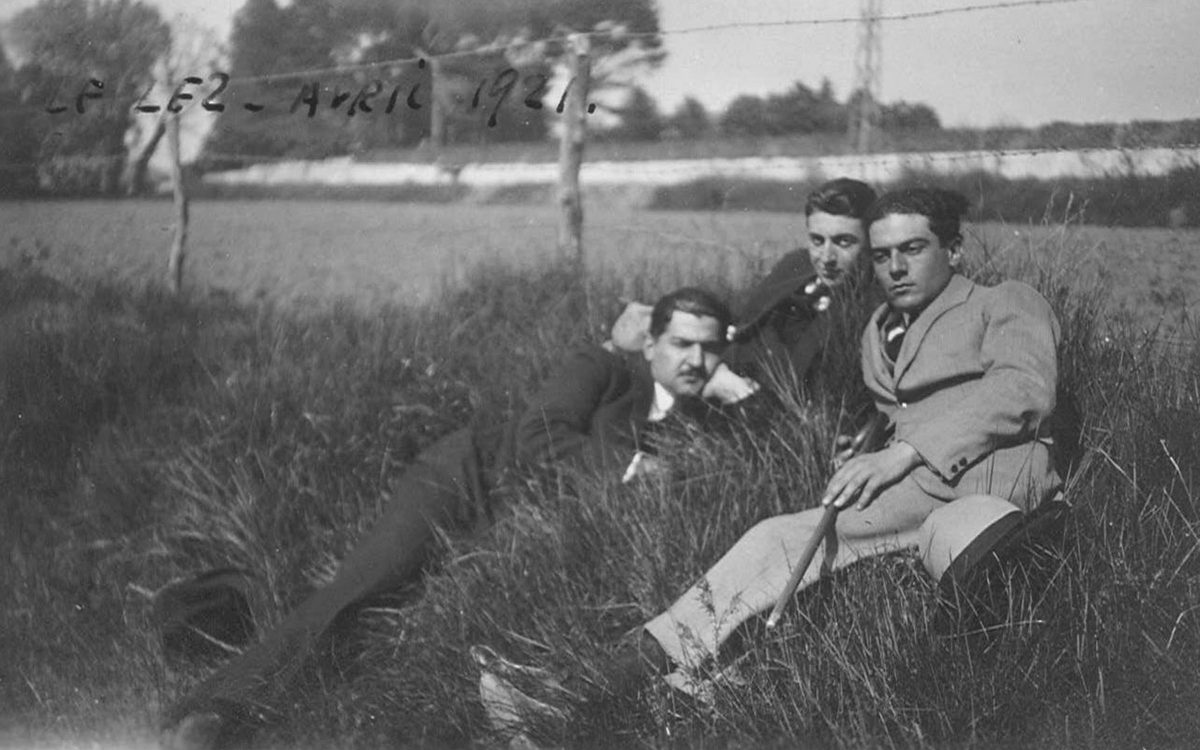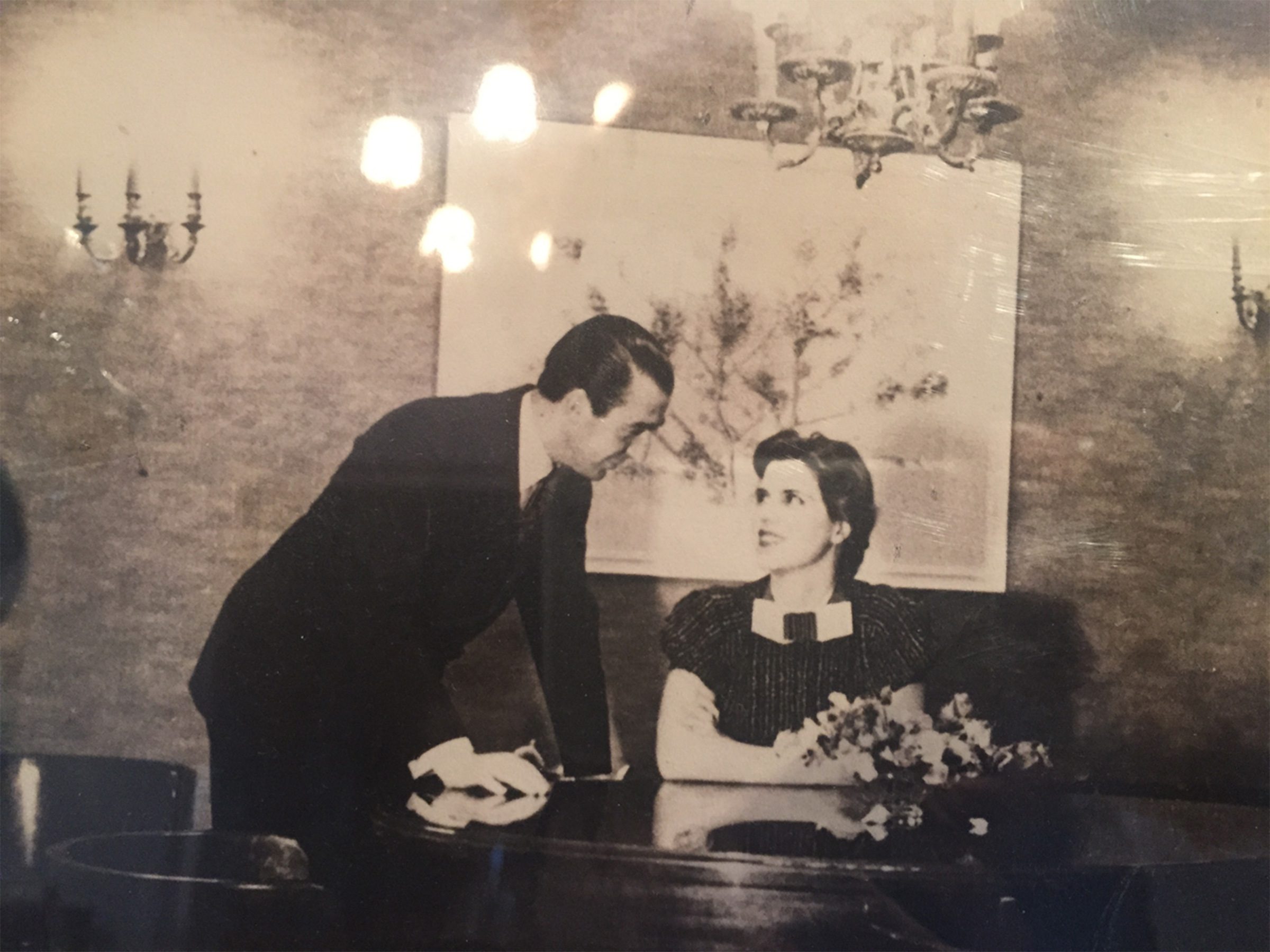Angelos Katakouzenos was born in 1904 in Lesvos, an island in the Aegean to which he often returned as a child, for holidays; the rest of the year he lived with his wealthy family of timber traders in Smyrna, on the western coast of Asia Minor.

The life of Angelos Katakouzenos
He graduated with honours from the famous Evangelical School of this city when he was just 16 years old and went to Lesvos once more for the summer. While visiting a chapel to admire a wall painting depicting Virgin the Mermaid (Panagia he Gorgona), he encountered a young girl in chains; she was insane, and no one was around to help her. He was so grief-stricken that he took the decision to become a psychiatrist and prevent people from reaching the desperate stage of the chained girl.
Immediately after he went to France, where he studied medicine in Montpellier. He soon became very popular among students from Hellas, who elected him as their representative. Two years later he moved to Paris to continue his studies with Professors J.Sicard and Th.Alajouanine in the Necker and Salpetriere Hospitals respectively. During his student years in France he forged durable friendships with other students that would later become leading figures of Hellenic intellectual and artistic life, the so-called “1930s generation.” His experiences from these years were later presented in a series of psychographic essays of these old friends.
After ten years abroad, he refused proposals to work in France and the United States and returned home. A little later he met Leto Protopappa and married her in 1934. He accepted an invitation to establish one of the first psychiatric clinics in Hellas, in the Evangelismos Hospital. He was one of the first to use the narcoanalysis method and soon gained international fame that attracted many patients from Paris or London to his Athenian office that hosted the likes of William Faulkner, Albert Camus or Aristotle Onases.
But in addition to his medical career and his extensive publications in Greek, French and German, he was a man of high intellectual caliber and loved art. He created the Franco-Hellenic Institute and the Hellenic-American Union, both with the aim to promote cultural interchange. His thoughtful lectures and the people he managed to attract in the evenings he organised caused much attention and admiration; in the 1950s he invited the Nobel Prize winner Albert Camus to lecture at a conference on the future of European Civilisation.
Albeit having being elected Professor of Psychiatry at the University of Paris, Member of the French Academy and Commandeur de la Legion d Honneur, he never became fully acknowledged for his worth in his own country. When he applied for a lectureship at the University of Athens, he was rejected for being “too good an orator, persuasive and lucid, therefore capable to easily mislead his students”! Many years later, in 1979, he was refused entry to the Academy of Athens. However, Katakouzenos did not leave Hellas and remained faithful to the vision he formulated as a teenager in Lesvos. If there should be one single phrase summarising Katakouzenos lifetime and his relation to his beloved homeland, that would be Giorgos Seferes line from his Book of Exercises: Wherever I travel Greece wounds me.
Only a couple of years after his rejection by the Academy, Angelos Katakouzenos died on the 28th of August 1982. He had gained the love of his patients and of the Hellenic public, albeit remaining outside the academic establishment and gaining little official renown. However, his legacy did survive thanks to the biography written by his wife, Leto, and will hopefully be continued through the work of the Angelos and Leto Katakouzenos Foundation.
The life of Leto Katakouzenou
Arete-Leto Protopappa was born in 1914 in Pireaus, where she spent her childhood years. Her great-grandfather was aid-de-camp to the first king of Hellas, Otto, and came from Montenegro. Her grandfather founded the first biscuit factory in Hellas and her father was a paediatrician and senator during Eleutherios Venizelos tenure. Her mother was a relation to Vittorio Emmanuele, king of Italy, and a famous beauty. When Leto was just 10 years old she was expelled from her school for writing a paper on Nikolaos Plasteras, a legendary extremist general much despised by the then royalist government; she had a flair for breaking norms from an early age.
At the age of 12 she lost her elder brother to typhoid and followed her bereaved mother to Berlin, Vienna and Rapallo in Italy. By the age of twenty, when she returned to Hellas, she was fluent in French, English, German and Italian and had a degree in piano from the Berlin Academy of Music. When she met with Angelos Katakouzenos in 1932, the enchanted bachelor proposed to her and their marriage lasted almost 50 years.
But being a worthy wife of a great man was not enough for Leto. She took part in the underground resistance during the Nazi occupation and pursued an active literary career. In 1949 her play The luminous path was the first play by a woman to be staged (with considerable success) at the National Theatre. In coming years she published two novels, two collections of short stories and an account of her acquaintance with Albert Camus. Her books referred mainly to incidents from her own experience, and were full of picturesque details from everyday life.
She was an ideal hostess for her husband many friends, and regularly entertained both Nobel prize winners of Hellas, the poets Giorgos Seferes and Odysseas Elytes, in her salon; its rooms resounded with music, poetry and spirited debates by the such of Albert Camus, William Faulkner, and Arthur Miller. Marc Chagall portrait of her hung next to works by major painters, like Nikos Chatzekyriakos Gkikas (Ghika), Spyros Vasileiou, Giannis Tsarouches and Nikos Gounaropoulos. The Katakouzenoi belonged to the intellectual elite of their times, and both Angelos and Leto functioned as cultural ambassadors of modern Hellas to the rest of the world and as arbiters of international taste to their country.
After a 45-years long but childless marriage, Angelos died in 1982. Shortly after Leto published a book narrating his life titled Angelos Katakouzenos, ho Vales mou (Angelos Katakouzenos, my Valis). Inspired by this token of love and with her encouragement a group of young people was brought together and organised during the course of ten years a series of panels with the participation of leading figures of contemporary Hellenic life, mainly friends of the couple but also younger artists and intellectuals. In 1996 she accidentally found her husband last note to her, which he had prepared to send to her with some flowers the morning he died it was his call to follow him, which she did in Christmas 1997 her last will was the creation of a foundation that would preserve the house and its contents and continue their legacy.

The 30’s generation
The couple were not an isolated case; they belonged to the so-called “1930s generation”, a cultural movement by people born in the beginning of the 20th century, intellectuals who had mainly studied abroad and returned to Hellas with the dream of transforming their country to a modern state while remaining loyal to its cultural uniqueness and vast heritage (Zias 1994: 11-15).
They were closely linked to the vision of Eleutherios Venizelos, a Cretan politician who during his second tenure (late 1920s to mid 1930s) strove to modernise Hellenic economy and social life. During the German occupation of Hellas between 1941 and 1945, the “1930s generation” (and the couple in particular) joined the underground urban resistance against the Nazis. The overall progressive political attitude of these upper middle-class patricians kept them in touch with the avant-garde of Europe (especially France, but also Britain, Italy and Germany) and the United States in the post-war period.
The Katakouzenos house was a meeting point for this group, where its members presented their work and discussed cultural and political issues. Following a moderate path, between progressiveness and traditionalism, between high fashion and popular culture, the couple distilled in their lifestyle a Hellenic blend of patriotism and revolution. It is quite characteristic that Professor Katakouzenos denied serious proposals to undertake the direction of important medical institutions abroad (especially in the United States) for mainly patriotic reasons; for his idealistic generation, a real Hellene should remain and work in Hellas, however difficult that was.

